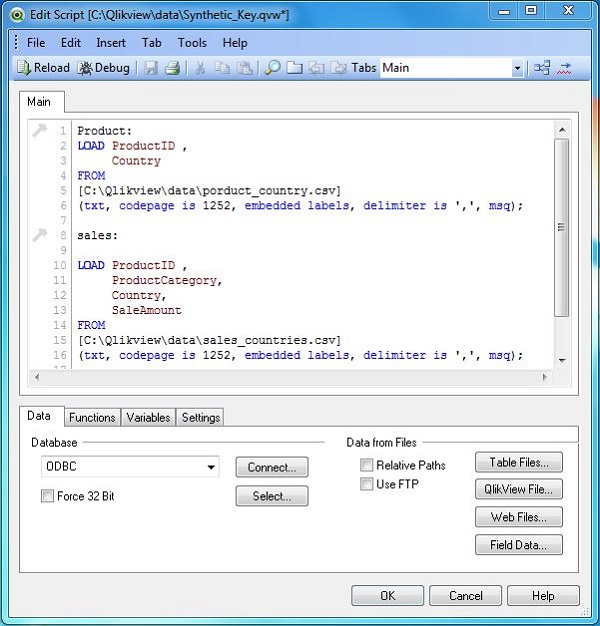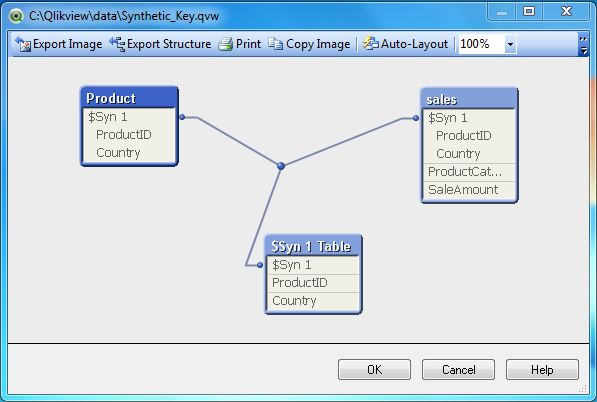
- QlikView - Home
- QlikView - Overview
- QlikView - Desktop Installation
- QlikView - Architecture
- QlikView - Navigation
- QlikView - Excel file
- QlikView - Delimited file
- QlikView - XML file
- QlikView - Web file
- QlikView - Database
- QlikView - Inline Data
- QlikView - Resident Load
- QlikView - Preceding Load
- QlikView - Incremental Load
- QlikView - Data - files(QVD)
- QlikView Report Interface
- QlikView - Sheet and Objects
- QlikView - Scripting
- Qlikview - Functions
- QlikView - IntervalMatch
- QlikView - Aggregate Functions
- QlikView - Match Function
- QlikView - Rank Function
- QlikView - Peek Function
- QlikView - RangeSum Function
- QlikView - Documents
- QlikView - List Box
- QlikView - Multi Box
- QlikView - Text Object
- QlikView - Bar Chart
- QlikView - Pie Chart
- QlikView - Dashboard
- QlikView Data Transformation
- QlikView - Transformation Wizard
- QlikView - Fill Function
- QlikView - Column Manipulation
- QlikView - Rotating Tables
- QlikView Data Model
- QlikView - Dimensions & measures
- QlikView - Star Schema
- QlikView - Synthetic Key
- QlikView - Generating Data
- QlikView Data Analysis
- QlikView - Cross Tables
- QlikView - Straight Tables
- QlikView - Pivot Tables
- QlikView - Set Analysis
- QlikView - Joins
- QlikView - Keeps
- QlikView - Concatenation
- QlikView - Master Calendar
- QlikView - Mapping Tables
- QlikView - Circular Reference
- Qlikview Useful Resources
- Qlikview - Questions/Answers
- Qlikview - Quick Guide
- Qlikview - Useful Resources
- Qlikview - Discussion
QlikView - Synthetic Key
A Synthetic Key is QlikView's solution to create an artificial key when there is ambiguity about which key to use between two tables. This situation arises when two tables have two or more fields in common. QlikView's feature of creating association in memory automatically detects this scenario and creates an additional table, which will hold the value of the new key created.
Input Data
Let us consider the following two CSV data files, which are used as input for further illustrations.
Sales: ProductID,ProductCategory,Country,SaleAmount 1,Outdoor Recreation,Italy,4579 2,Clothing,USA,4125 3,Costumes & Accessories,South Korea,6521 Product: ProductID, Country 3,Brazil 3,China 2,Korea 1,USA
Load Script
We load the above input data using the script editor, which is invoked by pressing Control+E. Choose the option Table Files and browse for the Input file.

Data Model
Next, we look at the data model by using the menu command for table viewer, Control+T. The following screen comes up, which shows the creation of a third table that supplies the value of the synthetic key as both the tables have ProductID and Country as matching keys.

Impact of Synthetic key
Synthetic keys indicate the flaw in the data model that is being used. They do not cause any issue in the correctness of the data or performance of the report. Things will work fine if a big data model has one or two instances of synthetic keys. However, if we have too many of them, then that is an implication to redesign the data model.